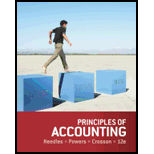
Never Flake Company provided a rust-prevention coating for the underside of new automobiles. The company advertised widely and offered its services through new-car dealers. When a dealer sold a new car, the salesperson attempted to sell the rust-prevention coating as an option. A key selling point was Never Flake’s warranty, which stated that it would repair any damage due to rust at no charge for as long as the buyer owned the car.
For several years, Never Flake had been very successful, but in 2013, the company suddenly declared bankruptcy. Company officials said that the firm had only $5.5 million in assets against liabilities of $32.9 million. Most of the liabilities represented potential claims under the company’s lifetime warranty. It seemed that owners were keeping their cars longer than they had previously. Therefore, more damage was being attributed to rust.
Discuss what accounting decisions could have helped Never Flake to survive under these circumstances.
Want to see the full answer?
Check out a sample textbook solution
Chapter 3 Solutions
Principles of Accounting
- Mime Delivery Service is owned and operated by Pamela Kolp. The following selected transactionswere completed by Mime Delivery Service during October:1. Received cash from the owner as an additional investment, $7,500.2. Paid creditors on account, $815.3. Billed customers for delivery services on account, $3,250.4. Received cash from customers on account, $1,150.5. Paid cash to the owner for personal use, $500.Required:Indicate the effect of each transaction on the accounting equation elements (Assets, Liabilities,Owner’s Equity, Drawing, Revenue, and Expense) by listing the numbers identifying the transactions,(1) to (5). Also, indicate the specific item within the accounting equation element that is affected, i.e.(1) Asset (Cash) increases by $; Owner’s Equity (Pamela Kolp, Capital) increases by $.arrow_forwardWhen a company incurs an expense but does not yet pay it, what is the entry?A. Debit Expense, Credit CashB. Debit Liability, Credit ExpenseC. Debit Expense, Credit LiabilityD. No entry needed helparrow_forwardWhen a company incurs an expense but does not yet pay it, what is the entry?A. Debit Expense, Credit CashB. Debit Liability, Credit ExpenseC. Debit Expense, Credit LiabilityD. No entry neededarrow_forward
- Dont use ai What is the effect of writing off an uncollectible account under the allowance method?A. Increases net incomeB. No effect on total assetsC. Decreases revenueD. Increases expensesarrow_forwardWhat is the effect of writing off an uncollectible account under the allowance method?A. Increases net incomeB. No effect on total assetsC. Decreases revenueD. Increases expensesi need help ..arrow_forwardGet the Correct Answer with calculation of this General Accounting Questionarrow_forward
- I am trying to find the accurate solution to this general accounting problem with appropriate explanations.arrow_forwardI need help with this general accounting problem using proper accounting guidelines.arrow_forwardI am looking for the correct answer to this general accounting problem using valid accounting standards.arrow_forward
- Hello Dear Tutor Please Need Answer of this Question as possible fast and Correctarrow_forward15. The balance in the dividends account is closed to:A. CashB. RevenueC. Retained EarningsD. Common Stock dont use AIarrow_forward15. The balance in the dividends account is closed to:A. CashB. RevenueC. Retained EarningsD. Common Stockneed help.arrow_forward
- Business Its Legal Ethical & Global EnvironmentAccountingISBN:9781305224414Author:JENNINGSPublisher:Cengage

